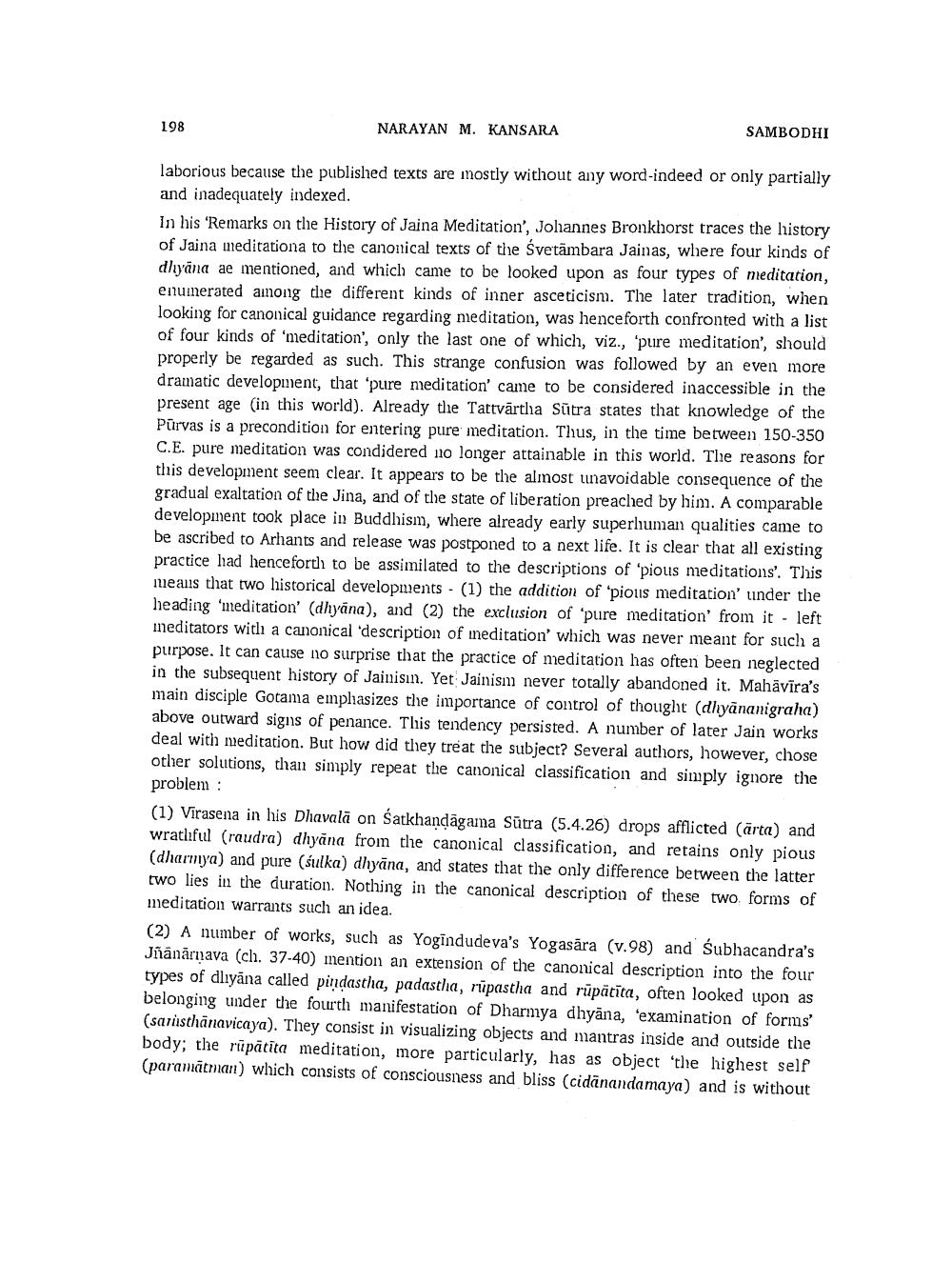________________
198
NARAYAN M. KANSARA
SAMBODHI
laborious because the published texts are mostly without any word indeed or only partially and inadequately indexed. In his 'Remarks on the History of Jaina Meditation', Johannes Bronkhorst traces the history of Jaina meditationa to the canonical texts of the Svetambara Jainas, where four kinds of dhyāna ae mentioned, and which came to be looked upon as four types of meditation, enuinerated among the different kinds of inner asceticism. The later tradition, when looking for canonical guidance regarding meditation, was henceforth confronted with a list of four kinds of 'meditation, only the last one of which, viz., 'pure meditation', should properly be regarded as such. This strange confusion was followed by an even more dramatic development, that "pure meditation' came to be considered inaccessible in the present age (in this world). Already the Tattvārtha Sūtra states that knowledge of the Purvas is a precondition for entering pure meditation. Thus, in the time between 150-350 C.E. pure meditation was condidered no longer attainable in this world. The reasons for this development seem clear. It appears to be the almost unavoidable consequence of the gradual exaltation of the Jina, and of the state of liberation preached by him. A comparable development took place in Buddhism, where already early superhuman qualities came to be ascribed to Arhants and release was postponed to a next life. It is clear that all existing practice had henceforth to be assimilated to the descriptions of pious meditations'. This means that two historical developments - (1) the addition of pious meditation under the heading 'meditation' (dhyāna), and (2) the exclusion of 'pure meditation' from it - left ineditators with a canonical description of meditation' which was never meant for such a purpose. It can cause no surprise that the practice of meditation has often been neglected in the subsequent history of Jainisin. Yet Jainism never totally abandoned it. Mahāvīra's main disciple Gotama emphasizes the importance of control of thought (dhyananigraha) above outward signs of penance. This tendency persisted. A number of later Jain works deal with meditation. But how did they treat the subject? Several authors, however, chose other solutions, than simply repeat the canonical classification and simply ignore the problem :
(1) Virasena in his Dhavalā on Satkhandāgama Sūtra (5.4.26) drops afflicted (ärta) and wratlıful (raudra) dhyāna from the canonical classification, and retains only pious (dharmya) and pure (sulka) dhyāna, and states that the only difference between the latter two lies in the duration. Nothing in the canonical description of these two forms of meditation Warrants such an idea. (2) A number of works, such as Yogindudeva's Yogasāra (v.98) and Subhacandra's Jñanārnava (ch. 37-40) mention an extension of the canonical description into the four types of dliyāna called pindastha, padastha, rūpastha and rūpätita, often looked upon as belonging under the fourth manifestation of Dharmya dhyāna, 'examination of forms' (sarusthānavicaya). They consist in visualizing objects and mantras inside and outside the body; the rūpātīta meditation, more particularly, has as object 'the highest self (paramātman) which consists of consciousness and bliss (cidānandamaya) and is without




